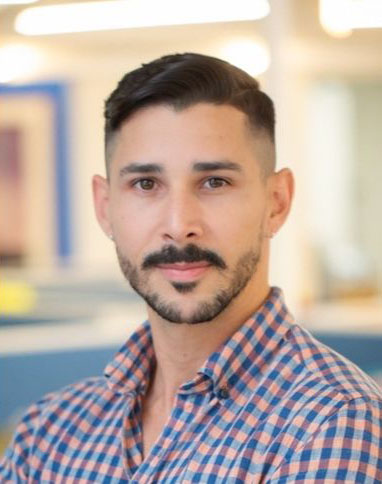
As of August 29, 107 people had been diagnosed with MPV in Puerto Rico, and cases appear to be trending sharply upwards. Damián Cabrera-Candelaria, a gay man living in San Juan, is NMAC’s treatment program manager.
Damián became involved in LGBTQI+ advocacy while he was a university student. Like many other Puerto Ricans, Damián was shaken by a brutal murder of a gay man in 2009, and he has devoted his life to supporting the health and well-being of his community ever since. He says that the environment for LGBTQI+ people in Puerto Rico has substantially improved since he first became involved in community activism, but he says “we still have a long way to go.”
In 2022, Damián is frustrated that gay/bisexual men are once more disproportionately affected by an epidemic. “I was speaking to a friend recently, and he was saying that the [MPV] situation reminds him of the beginning of the HIV epidemic, when the response in Puerto Rico was so slow. Many people seem to feel that it is not their problem because it only affects ‘a bunch of gays’.”
He is equally frustrated that the U.S. has allowed such stark racial and ethnic inequities in risk and service access to persist in the case of MPV. “As a gay person, it is frustrating that we are not learning from past mistakes with HIV and COVID. Health emergencies continue to disproportionately affect communities of color. Even though we have been fighting for years, we see history repeat itself.”
According to Damián, misinformation is a major challenge for educating gay/bisexual men in Puerto Rico about MPV. “I have been receiving messages on social media about not knowing where to get vaccinated or if the vaccine will have any secondary effects. There seems to be a lot of confusion about doses and the level of protection provided which in turn might be propelling hesitancy.”
Supporting gay/bisexual communities to educate each other is essential, Damián says. “Hearing information from a peer is always powerful. You see a peer as an equal, as another person in your community. It is critical that those who are most affected are brought to the table not only to listen but also to make decisions, with the support of health officials and the scientific community. We are the ones who know our community the best because we are the community.”